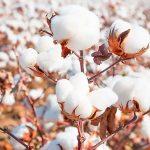Tips, best practices, and beliefs: what are the most energy-efficient washing machine cycles and how can we adapt them to our daily lives?
Paris
GINETEX, the International Association for Textile Care Labelling, has unveiled the findings of a study conducted by Testex, an independent laboratory, which specializes in textile analysis and certification. Tips, best practices, and beliefs: what are the most energy-efficient washing machine cycles and how can we adapt them to our daily lives?
- Try to wash with lowest temperature which still ensures a satisfactory result (1 wash cycle is always preferred to 2 wash cycles).
- Reducing the washing temperature from 40°C to 30°C may serve approximately 30% of the consumed energy.
- Always use the entire load capacity of the washing machine in use.
- A quick wash cycle may serve another 20% of the energy consumption, especially when used at lower washing temperature.
- The use of washing temperatures higher than 40°C may help to remove difficult stains but lead to significant higher energy consumption (60°C: + 50%; 90°C: more than double of the energy used. They are therefore recommended for very dirty textiles if authorized by the label.
Controlling energy consumption is at the heart of today’s economic and environmental concerns. Under the light of the forecasted energy shortage in the coming winter the topic of energy saving has even got another importance. The textile and clothing industry is also affected. Laundry represents up to 40% of a textile’s environmental impact over its lifecycle. GINETEX, the International Association for Textile Care Labelling, raises awareness about responsible textile care among professionals and consumers, with a special focus on eco-friendly actions under the clevercare.info initiative.
While energy sobriety is generally highly advised, GINETEX wanted to go a step further by studying the true impact of the different stages of textile washing on electricity consumption. It now unveils the main quantified indicators on the potential savings gained when using the right habits and washing routines. “Machine washing – an essential process in textile care – requires the use of resources, especially energy, that needs to be used with reason, considering today’s economic and climatic issues” comments Alejandro Laquidain, President of GINETEX. “We therefore wanted to learn more on washing machines’ electricity consumption through this study, in order to recommend the programs that best meet these energy saving requirements, while still preserving the quality and lifespan of textiles.”
| These tests aim to establish quantitative indicators on the amount of electricity that is truly consumed when some of the washing machine’s parameters are changed. The parameters for these results are the following: |
| • Washing temperature |
| • Predefined program settings (normal, quick wash, ECO mode), specific to the machine itself |
| • Use of the “prewash” option |
| • Laundry load (full: 7 kg, half: 3,5 kg) |
| • The machine’s spin speed, to extract residual water at the end of the cycle |
Electricity consumption differs according to use
Unsurprisingly, the study reveals that the washing temperature is undoubtedly what impacts the most on electricity consumption. According to Testex study, reducing the washing temperature from 40°C to 30°C results in an energy saving of 30% (0.06 kWh/kg of laundry). Otherwise, the tests indicate that higher washing temperatures, such as washing at 60°C, increase energy consumption by more than 50% (0.10 kWh/ kg of laundry). Washing at 90°C – the hottest program on washing machines, especially used for very dirty cotton textiles – consumes more than double the energy of washing at 40°C (+110%, 0, 22kWh/kg).
Pre-washing, another studied program, is an option offered by some washing machine models. Its use is mainly recommended for particularly high levels of dirt such as mud traces. It is therefore unnecessary to activate it with each wash. Another reason not to use it systematically is that on top of increasing water consumption, this program also increases energy consumption by 15 to 20% (0.05 – 0.06 kWh/kg).
Washing at full or half load is another parameter to consider when it comes to power consumption. A half-loaded machine will consume 50 to 70% more energy per kg of textiles (0.08 to 0.20 kWh/kg) than a full load with the same program.
The tests also show that the quick wash program, designed only to wash a few laundry items quickly, consumes less electricity than a normal program, depending on the chosen temperature. The lower the wash temperature, the greater the savings. At a washing temperature of 30°C, the energy savings represent almost 20% (0.03 kWh per kg of textile), while the savings effect at 90°C is less significative (< 1%, < 0.01kWh/kg).
Finally, one of the main outcomes of the Testex study concerns the energy consumed during the spin cycle. Its impact on energy consumption remains relative and differs according to the selected spin speeds (which vary according to the washing machine models). In fact, a higher speed uses more electricity but is more effective in spinning the laundry correctly and eliminating residual water. It therefore reduces the drying time, whether it’s natural drying in the open air or with a dryer. For the latter, the more efficient the spinning, the shorter the drying cycle.
Reasoned consumption in line with textile care recommendations
Many lessons can be drawn from this study. It also sheds light on the actual quantities of electricity consumed when washing various textiles. However, one should always follow the brand’s care recommendations featured on the textile’s care label, while adapting them to the textile’s use. The choice of program and the choice of detergent are also important for an effective quality wash.
They are essential to obtain the desired cleanliness from the first wash and avoid adding extra washing steps which will require more resources.
For very dirty textiles, for instance, one should pre-wash or choose a temperature higher than 40°C (if authorized by the label). Indeed, a 40°C wash consumes less electricity, but may have to be used twice if it’s not effective. A single wash cycle at 60°C will consume less time, energy, and water than two cycles at 40°C.
The spin speed – and using a dryer – must also be chosen according to the type of textile. Higher speeds can cause severe creasing of some fabrics, but this remains reversible. For others, like wool – which benefits from a specific program – a low speed of 400 rpm maximum will be needed to preserve the textile’s fiber quality (and hence its lifespan) to a maximum.
| Throughout the world, the company that markets the finished product is responsible for the information featured on its composition label. As a reminder, the 5 symbols, each of which correspond to specific criteria, now constitute a real quality and safety guarantee for consumers and professionals. These care symbols provide consumers with information on the maximum permitted treatments for their textiles, in order keep them in good shape for as long as possible. |
This study was carried out by the Testex laboratory on behalf of GINETEX, between January and March 2022. It covers solely the electricity consumption generated by washing machines when using the above-mentioned programs. Other factors such as water consumption were not analyzed. All the results and parameters studied are available upon request from GINETEX.
About GINETEX:
First founded in Paris, in 1963, GINETEX, the International Association for Textile Care Labelling, has devised an internationally applicable care labelling system for textiles based on symbol, which aims at informing textile companies and consumers on the best way to care for their textiles. The pictograms used are registered trademarks and are equally property of GINETEX and COFREET. The association promotes these symbols worldwide and coordinates its technical contents on a global scale – which is essential for the definition and application of the care labelling code.
GINETEX counts a large number of national organisations within its members. These organisations represent the textile and retailing industries and other textile care stake players. They include: Austria, Belgium, Brazil, Czech Republic, Denmark, Finland, France, Germany, Greece, Italy, Japan, Lithuania, Netherlands, Norway, Portugal, Slovakia, Slovenia, Spain, Sweden, Switzerland, Tunisia and United Kingdom.



